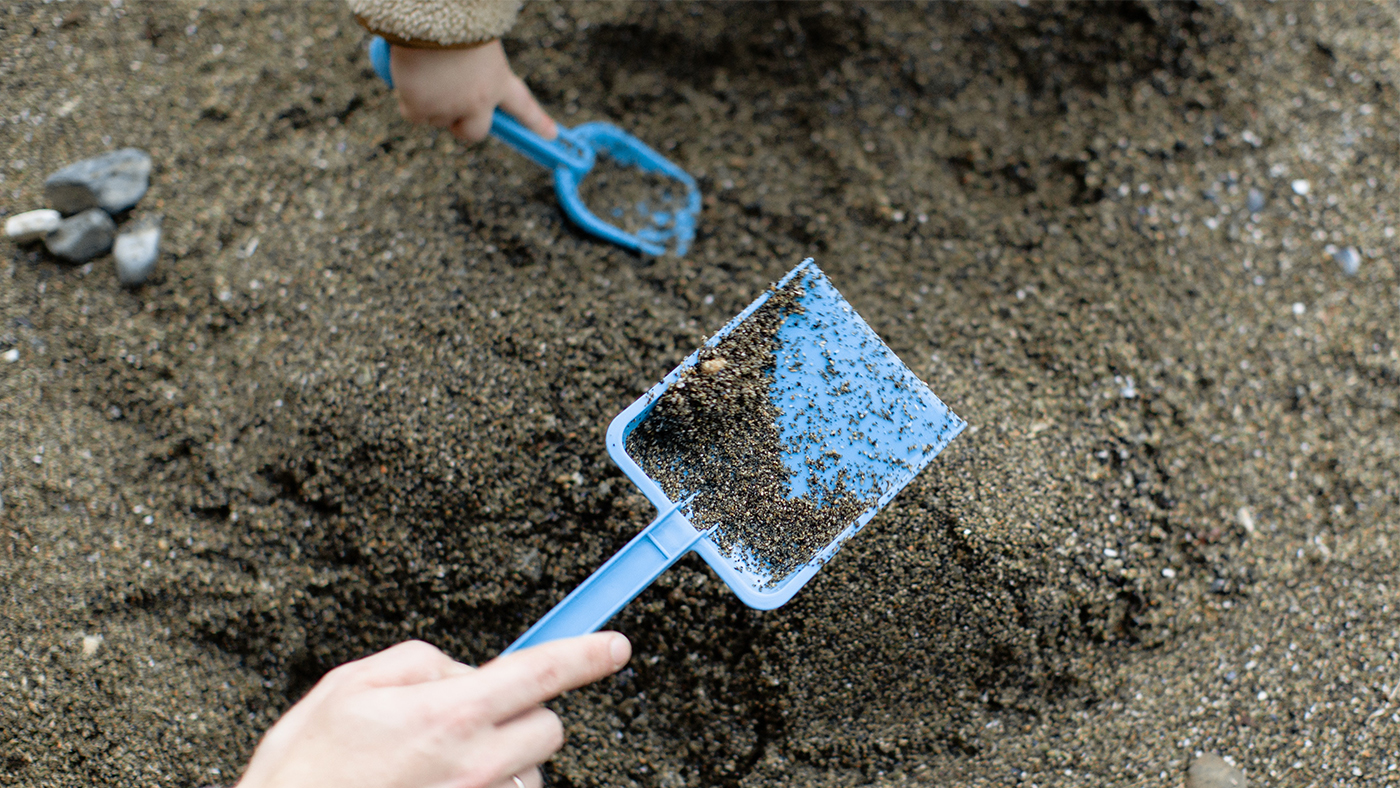Uses tools in order to find a solution to a simple problem, eg. Uses a toy to reach another

Your baby has been exploring objects in different ways and has started to explore what they can do with objects. Now, as their cognitive skills develop, they sometimes have a particular goal in mind when they play and will use ‘tools’ to help them achieve this goal.
What is a tool?
When you think about a tool your mind might immediately consider items such as hammers and screw drivers. However, when we describe toddlers using ‘tools’ we simply mean that they use an object to help them achieve a goal. Simple tool use is not a uniquely human characteristic, for example, chimpanzees use rocks and stones as tools to enable them to retrieve food. And tool use in animals and humans is practised and learnt over many years of development. [1]
At first, your baby’s use of tools will be quite simple, perhaps using one thing to reach another that is out of reach. However, this development is significant as it is an important step in your baby’s development of problem-solving skills.
Goals, intentions and tool use
Using tools involves both physical and cognitive skills, your baby will be developing the ability to hold and manipulate objects, and this will help them to use objects as tools. They also need to develop cognitive skills to keep their goal in mind, to think about possible solutions and to avoid distractions as they see to achieve their goals. These cognitive skills will take some time to develop and as your baby begins to use tools to achieve a goal, they might become distracted or frustrated at times as they do not have the thinking skills to think about multiple solutions to a problem.
Your baby’s early tool use involves them recognising features of objects and being able to think about how they might help them achieve their goal. This means that lots of time exploring objects will help your baby as they begin to use tools. Their first use of tools will involve using objects they see being used frequently, such as a toothbrush to brush teeth or a spoon to stir.[2] As their knowledge of objects and their functions develops, they will adjust the way in which they hold an object according to their goal and might realise that an object can be used for different purposes.
Your baby will watch what you and others around them do and see how you use objects to achieve goals. They will copy your actions and gradually begin to understand your intentions when you are using a tool so move towards copying the goal and not simply the action.
What next?
Your baby will develop their cognitive skills and be able to focus on their goal and sometimes avoid distractions. As their physical skills develop they will use these to use objects in different ways and this will support them as they develop their problem-solving skills.
References
[1] Kahrs, B.A, Jung, W.P. & Lockman, J.L. (2014). When does tool use become distinctively human? Hammering in young children. Child Development, 85(3) 1050-1061
[2]Bobrowicz, K. Lindstrom, F, Loven, M.L. & Psouni, E. (2020). Flexibility in problem solving analogical transfer of tool use n toddlers is immune to delay. Frontiers in Psychology, 11, Article 573730.